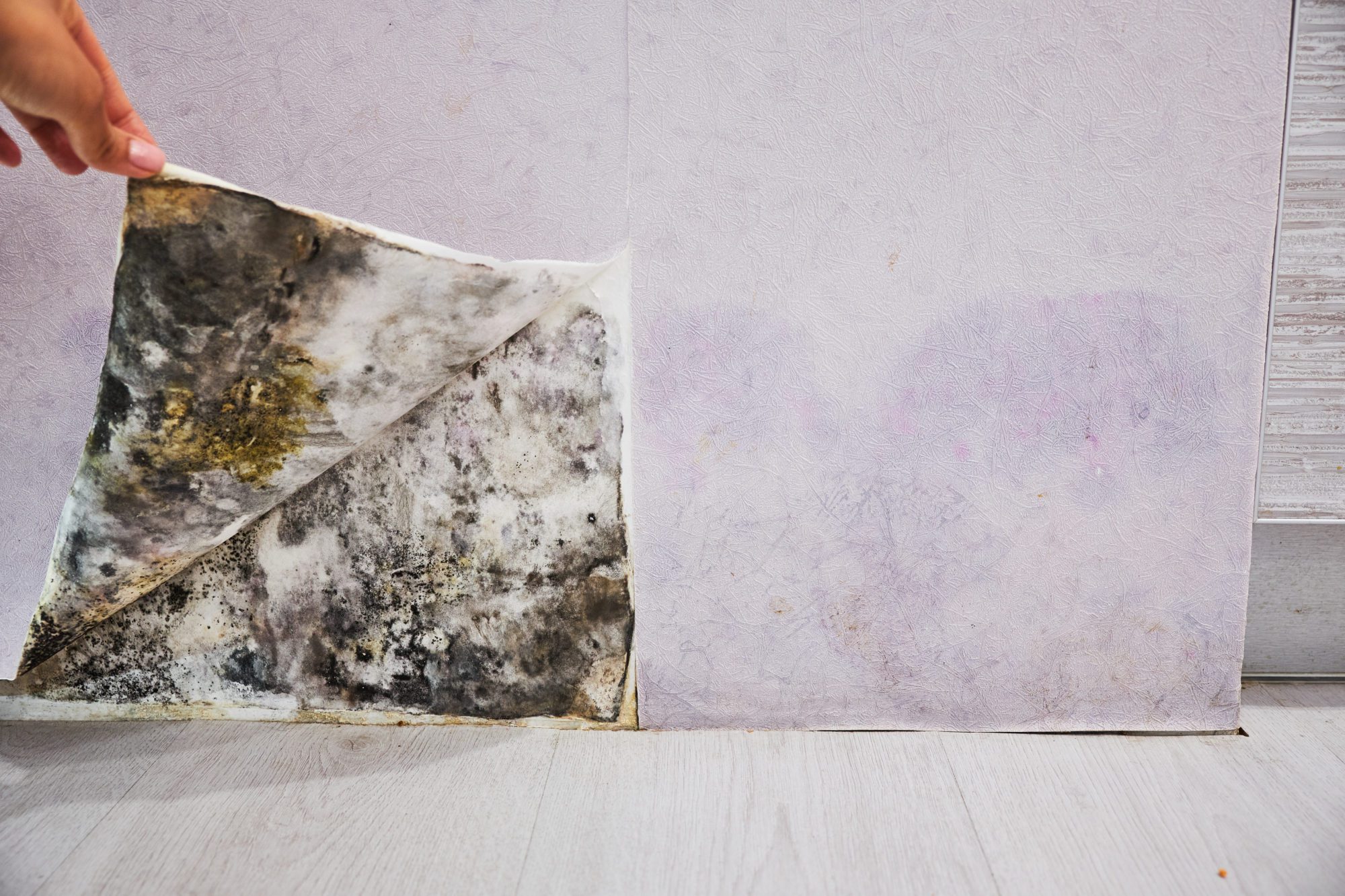
Indoor mold causes two key problems: it destroys the material it feeds on (including walls, carpets, insulation, and ceilings), and exposure to high concentrations of certain types of mold creates health problems. Unless it is dealt with and removed, it will continue to grow. The only way to deal with mold is to eradicate it.
Most buildings have mold because they offer three ingredients that mold needs to grow:
- Food includes materials high in cellulose, such as paper and wood. Drywall, wallpaper, carpet, ceiling tiles, dust, and dirt qualify as food sources for mold.
- Heat, as mold spores thrive in temperatures between 32 and 120 degrees Fahrenheit. Temperatures from about 70-90 degrees are the most conducive for mold growth. Chances of mold growth are heightened greatly between those temperatures.
- Water is the key ingredient. Mold cannot grow without moisture. This is one of the reasons that leaking pipes, roofs and ceilings, sewer backups, floods, and condensation end up causing mold issues.
As part of routine maintenance, buildings should be inspected for evidence of water damage and visible mold. The conditions causing mold (such as water leaks, condensation, infiltration, or flooding) should be corrected to prevent mold from growing.
There seems to be a misconception that removing mold by applying bleach or chemicals is the answer to the problem. This is not the case because dead mold spores are just as harmful to the human lungs as live spores. Mold spores, like Aspergillus and Stachybotrys (black mold), are toxic in both a live form and a dead form. The key to proper mold removal is removing all mold spores. If mold has been discovered, remember that some molds can be toxic and that it is best not to disturb the mold, which could inadvertently release spores in the air and create even more problems. A mold specialist should be contacted for a professional assessment.
You can control mold by:
- Controlling humidity levels
- Promptly fixing leaky roofs, windows, and pipes
- Thoroughly cleaning and drying after flooding
- Ventilating shower, laundry, and cooking areas
Regarding insurance, there are two areas, excluding an Environmental policy, where coverage for Mold-related claims can be found. One is under the
Commercial Property Coverage, and the other is under the General Liability Coverage.
Commercial Property – In order to have the damage repaired and the cost covered for mold clean-up or remediation, generally, the mold must have resulted from a covered cause of loss, such as water damage from a burst pipe. In addition, the insurance company must have been made aware that there was an incident that this resulted from. For example, if a pipe burst 10 months ago and a claim was not reported, the insurance company may deny the claim for mold remediation 10 months later, citing late reporting. Once that has been established, the policy must be reviewed to confirm whether or not mold is excluded.
General Liability – The property owner can be named in a lawsuit or be held negligent because of the possibility of an illness resulting from mold. This is where mold in a General Liability policy comes into play and why, with water damage claims, it is important that the insured almost always put
a claim in timely. If a suit were to be filed down the road from an incident and the insurance company was not put on notice regarding the originial incident, they could conceivably decline to provide a defense for the mold suit. In New York, if coverage applies, it will be up to the full General Liability limit. In New Jersey, typically, the carriers exclude lawsuits related to mold
Other Insurance – Most Directors & Officer’s Liability policies will not respond to a suit brought against the board because of a mold issue. Mold would be considered a pollutant, and typically, D&O policies have total pollutant exclusions. Commercial Umbrella policies typically follow the form on mold, meaning if the underlying General Liability policy is providing coverage for mold, the Umbrella will as well. If the GL excludes mold, then the Umbrella will also exclude it.
Whether or not the cost of mold clean-up/remediation will be covered depends on a few factors –
What caused the mold to occur? – Some companies may exclude mold outright, and some may not. The ones that provide Property coverage for mold only do so if the mold results from a covered cause of loss, such as a burst pipe. This can cause problems, as excessive humidity or condensation may not be considered a covered cause of loss and the remediation not covered, though there may be coverage for a liability suit depending on various factors.
What state is the risk located in? In New York, an Admitted carrier cannot exclude mold that has resulted from a covered cause of loss. Some carriers provide coverage up to the property limit, and others have a sub-limit. Most other states allow mold exclusions. In New Jersey, Admitted carriers typically sub-limit mold coverage at $15,000, though some offer the ability to purchase more for an additional premium.
Is the carrier Admitted or Non-Admitted? As indicated above, Admitted carriers typically provide mold coverage. Non-admitted carriers, since they are not licensed in that state, do not have to abide by the same laws requiring such. Typically, any policy written on a non-admitted basis will have a mold exclusion. It will be listed in the Forms and Endorsements section as Mold Exclusion or, in some cases, Fungi, Wet Rot, Dry Rot, and Bacteria Exclusion. These exclusions remove coverage for mold remediation, regardless of whether the mold resulted from a covered cause of loss.
As always, please contact us anytime with questions or claims, and download a free copy of this information here.

